Adding window boxes to the exterior of your home is one of the simplest ways to upgrade your home’s curb appeal.
Filled with colorful flowers, herbs, or trailing greenery, window boxes provide a quick pop of color and personality to your home’s facade.
Window boxes come in a variety of styles, sizes, and materials so you can find options to complement your home’s existing architectural details.
Plus, they are an easy DIY project if you want to add or build custom window boxes yourself.
If you’re looking for inspiration for adding or improving window boxes for your home, here are 13 unique window box ideas to inspire an instant facade upgrade:
✨Click to Get My 101 FREE Designer Room Ideas
Bold and Bright Window Boxes
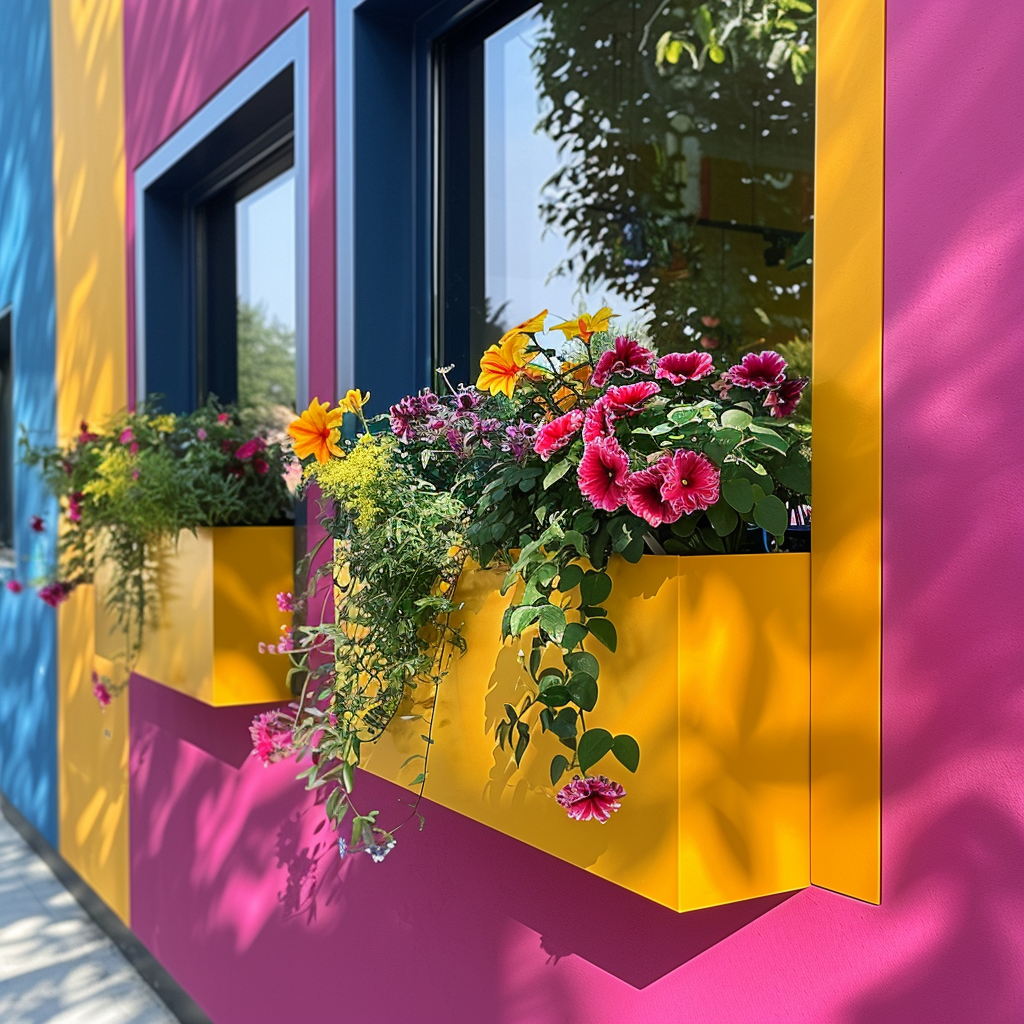
Painting your window boxes a bold, bright color is an instant way to grab attention and make a statement.
Opt for glossy paint colors like cherry red, sunshine yellow, or cobalt blue.
Then fill the window boxes with equally vibrant blooms like red geraniums, purple petunias, or yellow marigolds.
The contrast between the saturated window box color and brilliant flowers will instantly perk up your home.
For a cohesive look, match the window box color to your home’s other exterior accents, such as the front door or shutters.
You can also coordinate the floral colors with the window box color.
For example, cherry red window boxes overflowing with red and pink geraniums and petunias.
Natural Wood Window Boxes
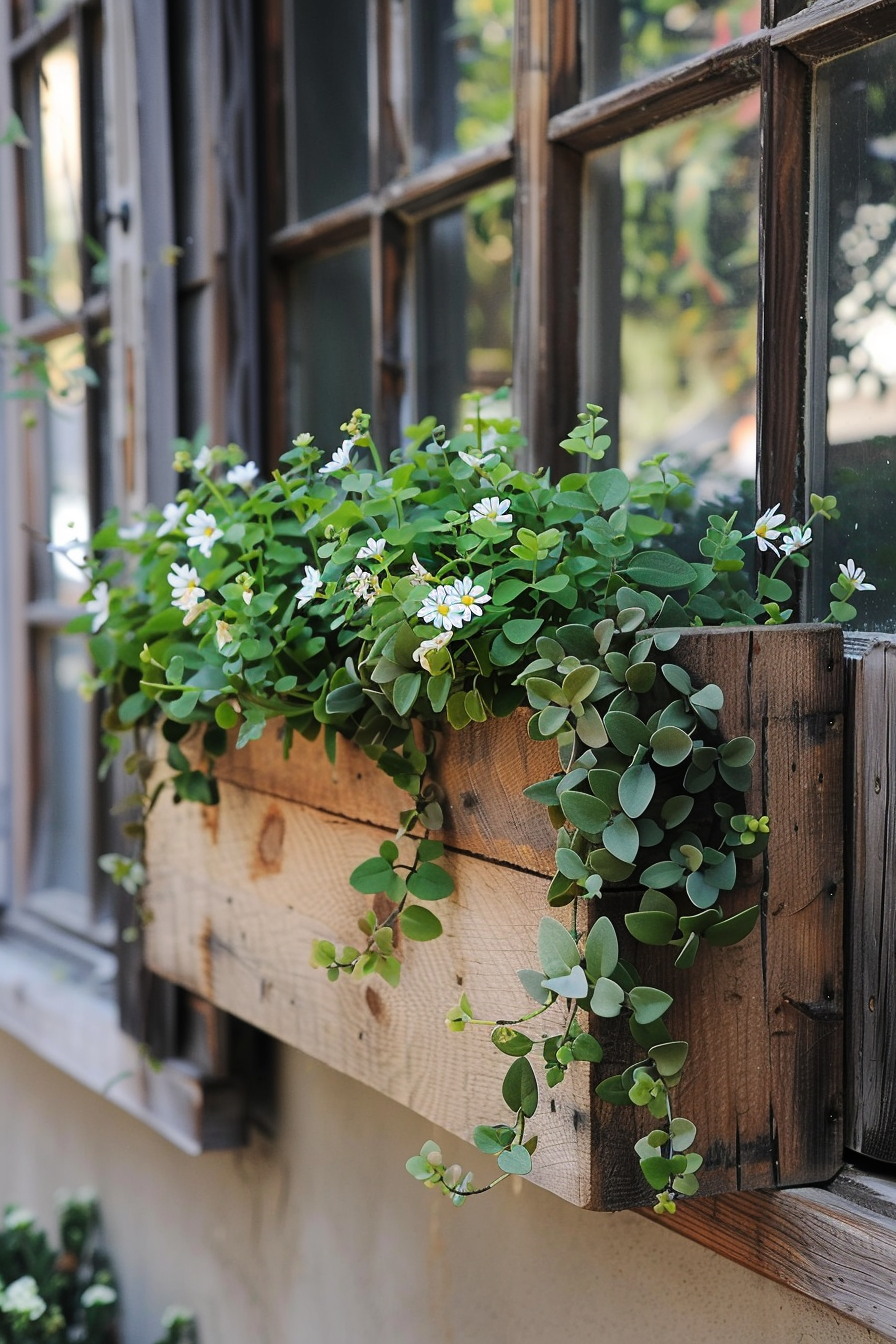
There’s something charming about the look of natural wood window boxes overflowing with flowers and greenery.
Stained wood window boxes come in many warm, earthy stain colors like espresso, ebony, and rustic gray.
Opt for a classic craftsman style look with slatted wooden window boxes.
Or try copper-lined window boxes for a pop of shine.
For a casual, natural style, plant your wood window boxes with informal, cottage-style flowers like daisies, lavender, coral bells, and trailing ivy.
The simplicity of wooden window boxes filled with informal flowers and foliage creates a relaxed, organic look.
To make the flowers really pop, paint the back panel of the window box a light yellow, blue, or green for contrast.
Black Window Boxes
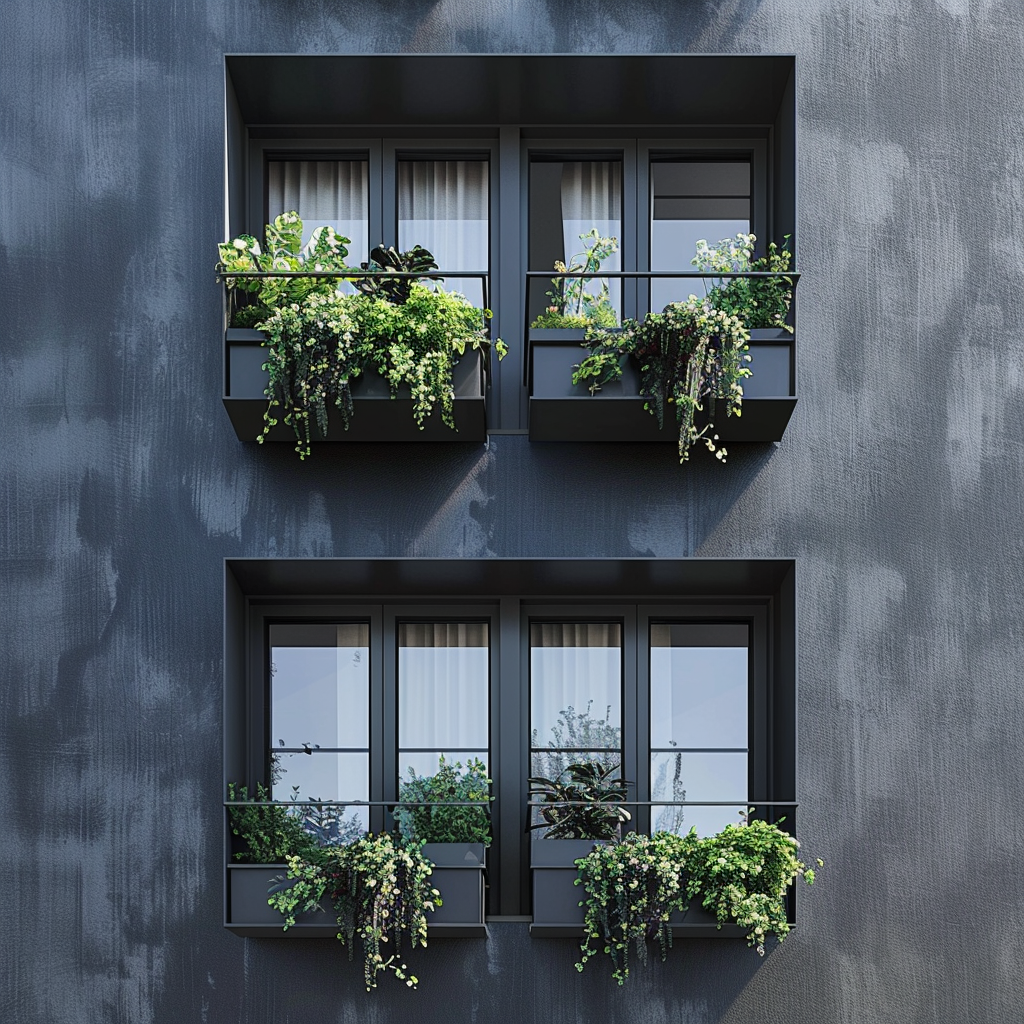
For an elegant, sophisticated look, opt for stately black window boxes.
Black window boxes beautifully contrast with brick or stone exteriors.
Overflowing with eye-catching red, purple, pink or white blooms, black window boxes add drama and interest.
Seeking a more understated look?
Plant black window boxes with cascading greenery like ivy or silver dollar eucalyptus for texture.
The cool tones of the black boxes and greenery create a relaxing oasis.
Paint is an affordable option for black window boxes, but for a more luxe look try powder-coated aluminum window boxes.
The dark, sleek powder-coated finish and durable aluminum construction create an elegant, timeless look.
Hanging Window Boxes
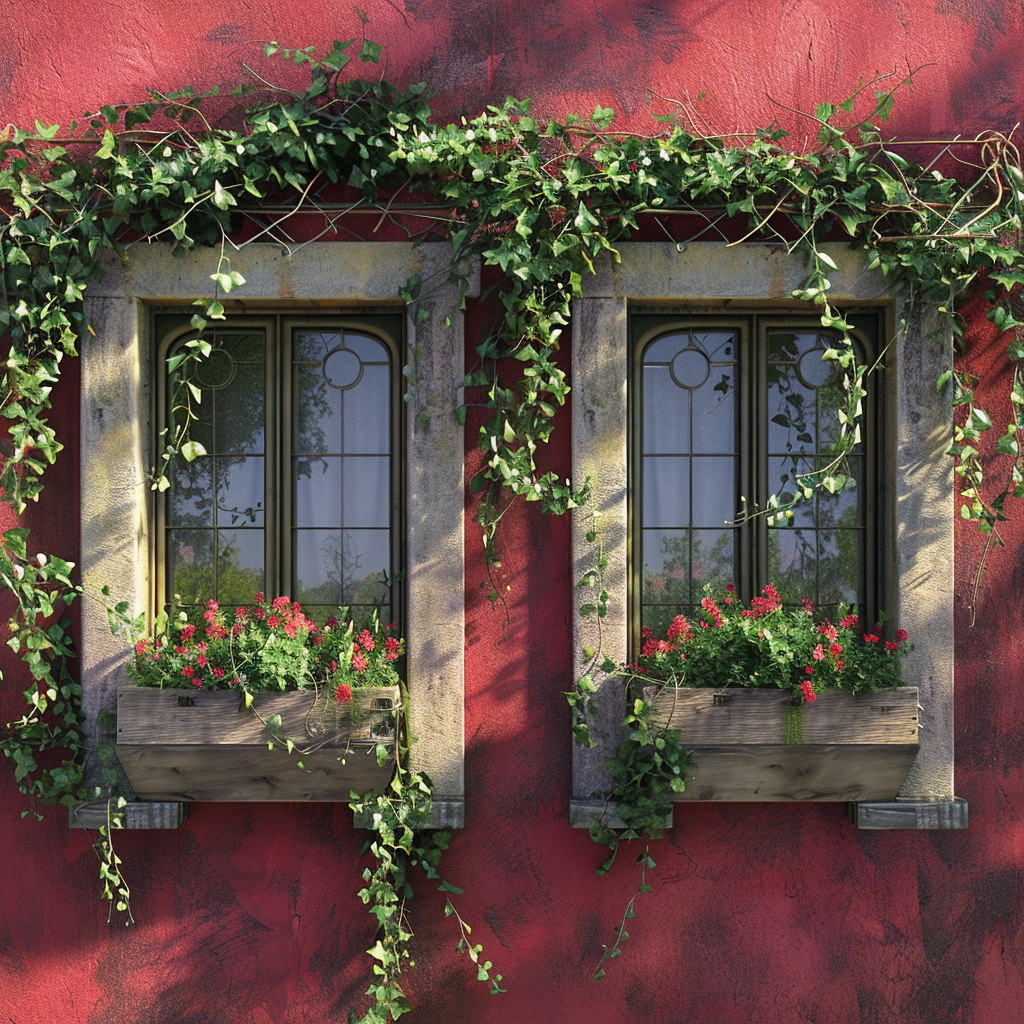
Hanging window boxes offer a unique, space-saving option for homes with limited windowsill space.
Mounted from above on hooks, chains, or cables, hanging window boxes can be utilized on windows that don’t accommodate traditional window boxes.
Opt for compact, trailing plants like ivy, vinca, petunias, calibrachoa, and million bells that will cascade gracefully from your hanging window box.
Mix colors within each box, or use coordinating colors for a cohesive look.
For easy watering and draining, make sure your hanging window boxes have drainage holes.
Automatic self-watering systems are also useful for keeping plants consistently hydrated in hanging positions.
✨Click to Get My 101 FREE Designer Room Ideas
Mixed Height Window Boxes
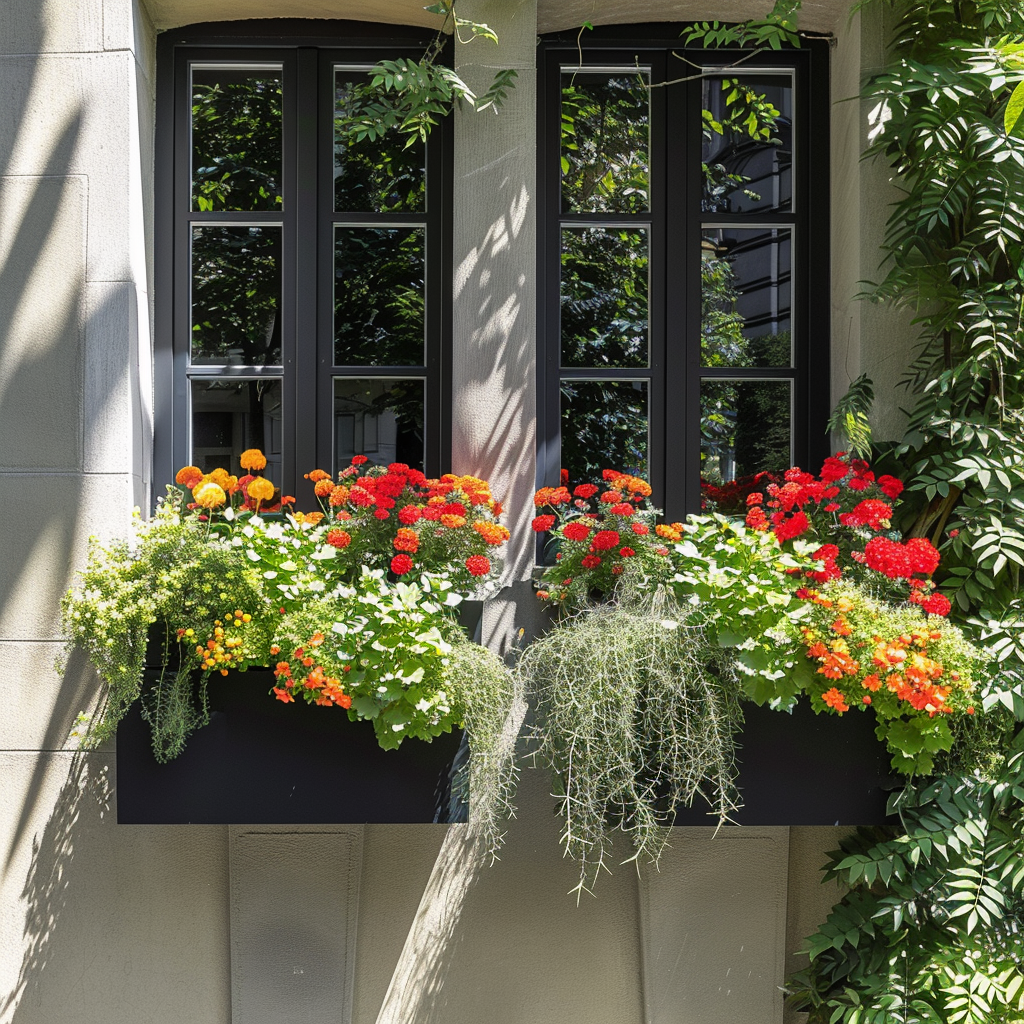
Creating a tiered effect with your window boxes immediately adds more visual interest to your home’s facade.
Start with traditional window boxes on the bottom window ledge, and then add a second set of window boxes on a stand above them.
The upper and lower window boxes don’t have to match perfectly.
Try combining window box styles and colors.
For example, you could pair classic brown wood window boxes on bottom with glossy red window boxes on top.
In the layered window boxes, plant taller blooms like snapdragons, delphiniums, dahlias or gladiolus in the upper boxes.
Use shorter plants like marigolds, begonias, or dwarf dahlias in the lower window boxes.
The varied heights create a more dynamic, layered look.
Window Boxes With Greenery
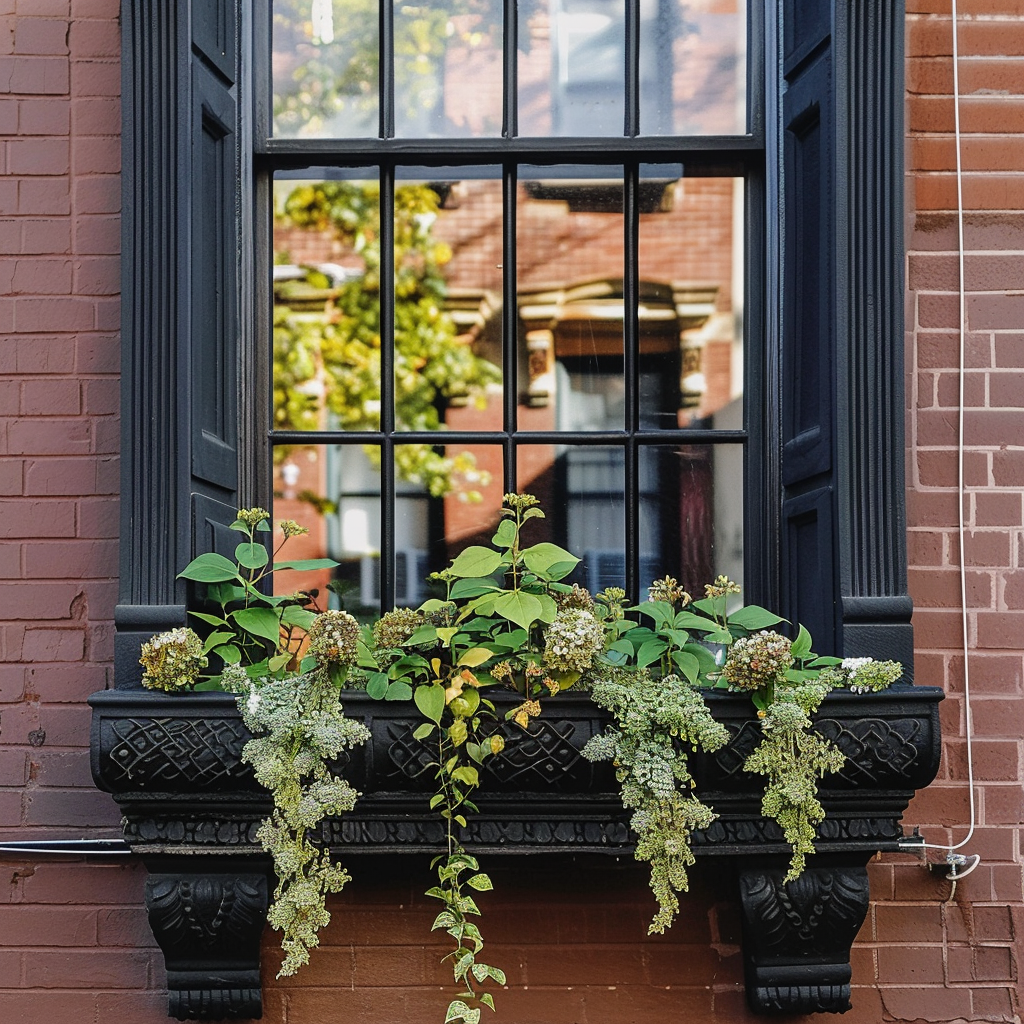
Not big on flowering plants?
Greenery offers fresh texture and color all season long.
Ferns, ivy, herbs, and ornamental grasses provide alternative options to traditional blooming window boxes.
Some great choices for greenery window boxes include:
- Trailing ivy or silver dollar eucalyptus
- Upright rosemary, oregano, thyme
- Feathery ferns or flowing grasses
- Variegated plectranthus for pops of white and green
- Mixed succulents for interest and texture
Add pops of color with blooms like pansies, violas, and snapdragons which will stand out brightly against the green backdrop.
Simple white blooms also complement the fresh look.
Annuals vs. Perennials
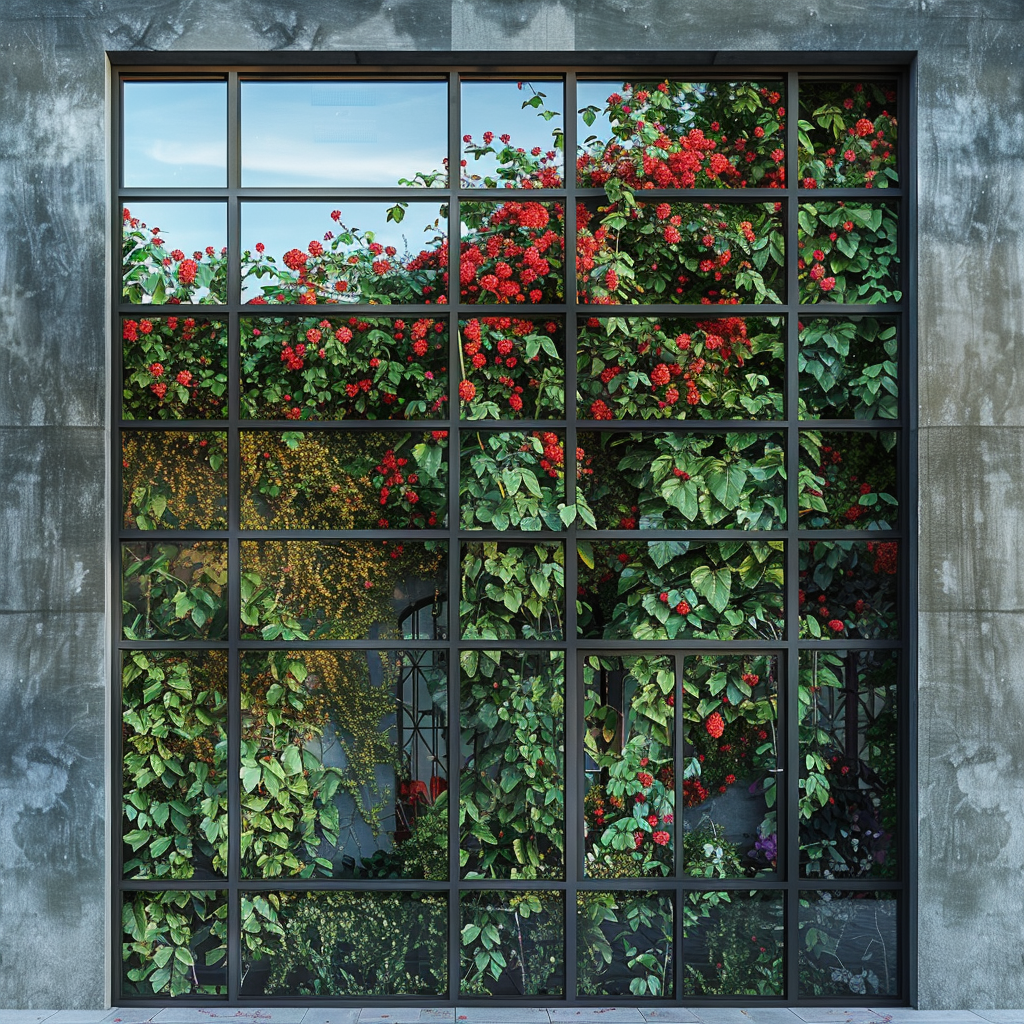
You can design stunning window boxes with either annuals or perennials.
Here are the pros and cons of each for gorgeous seasonal color:
Annuals:
- Pros: Wide selection of colors, types, and sizes available.
Bloom throughout the entire growing season.
Can be replaced each year for a fresh new look.
- Cons: Require more maintenance and watering.
Higher cost as plants must be replaced every year.
Good annuals for window boxes: Geraniums, petunias, marigolds, verbena, begonias, impatiens.
Perennials:
- Pros: Come back every year, so they are a long-term investment.
Often require less watering and care than annuals.
- Cons: Offer a shorter bloom time than annuals.
Must be divided or replaced when overgrown.
Good perennial options: Daylilies, lavender, coral bells, coreopsis, astilbe, hosta, ornamental grasses.
Edible Window Boxes
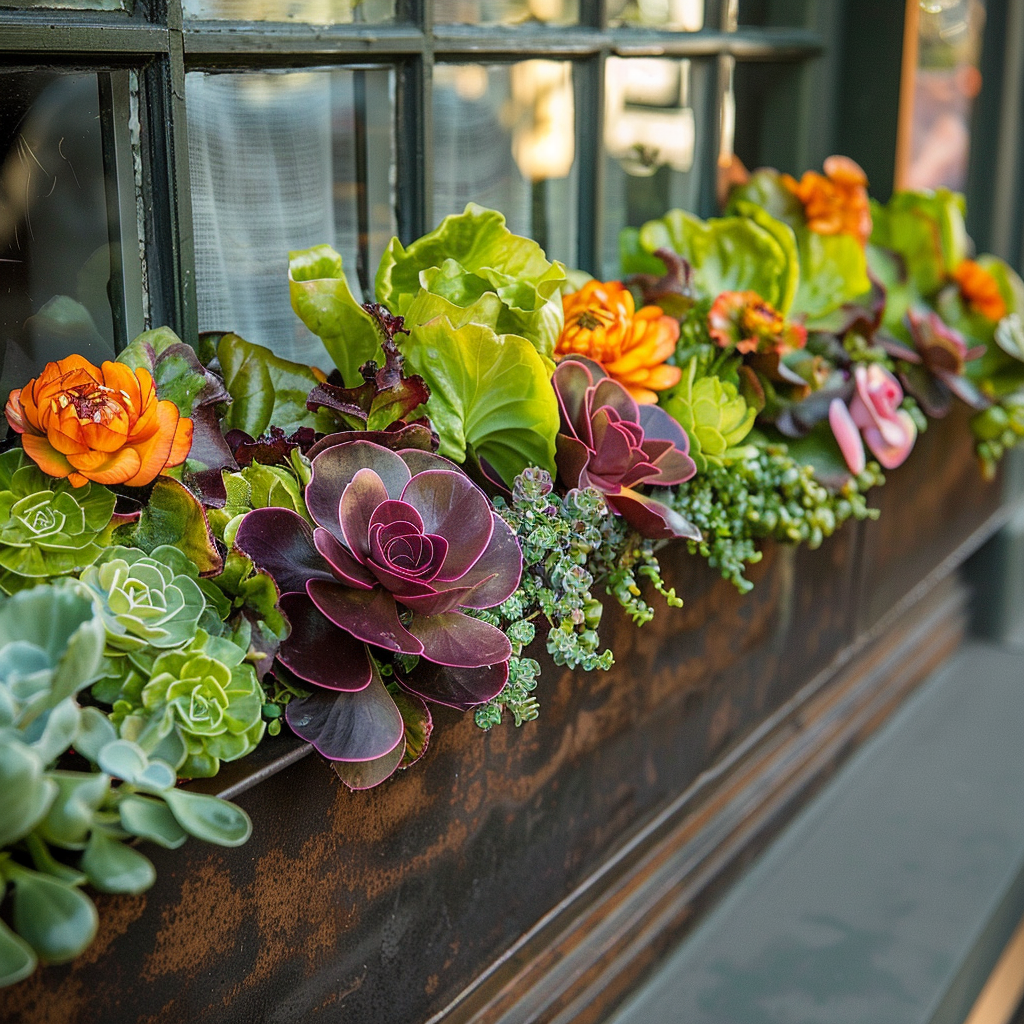
Why stop at ornamental plants?
You can also create window boxes overflowing with edible treats!
Some ideas for edible window box plantings:
- A selection of trailing herbs like thyme, oregano, sage, and mint.
- Mixed greens and lettuces for a salad window box.
- -Radishes, beets, carrots, and other root veggies.
Keep soil consistently moist.
- Strawberries, Nasturtiums and calendula – both beautiful and edible!
- Dwarf fruit trees or bushes such as miniature apples, peaches or blueberries.
- -Tomato, pepper and chile plants – select compact, container-friendly varieties.
Make sure your edible window boxes get at least 6 hours of sunlight daily.
Keep the soil consistently moist, and fertilize regularly for a productive harvest!
✨Click to Get My 101 FREE Designer Room Ideas
Succulent Window Boxes
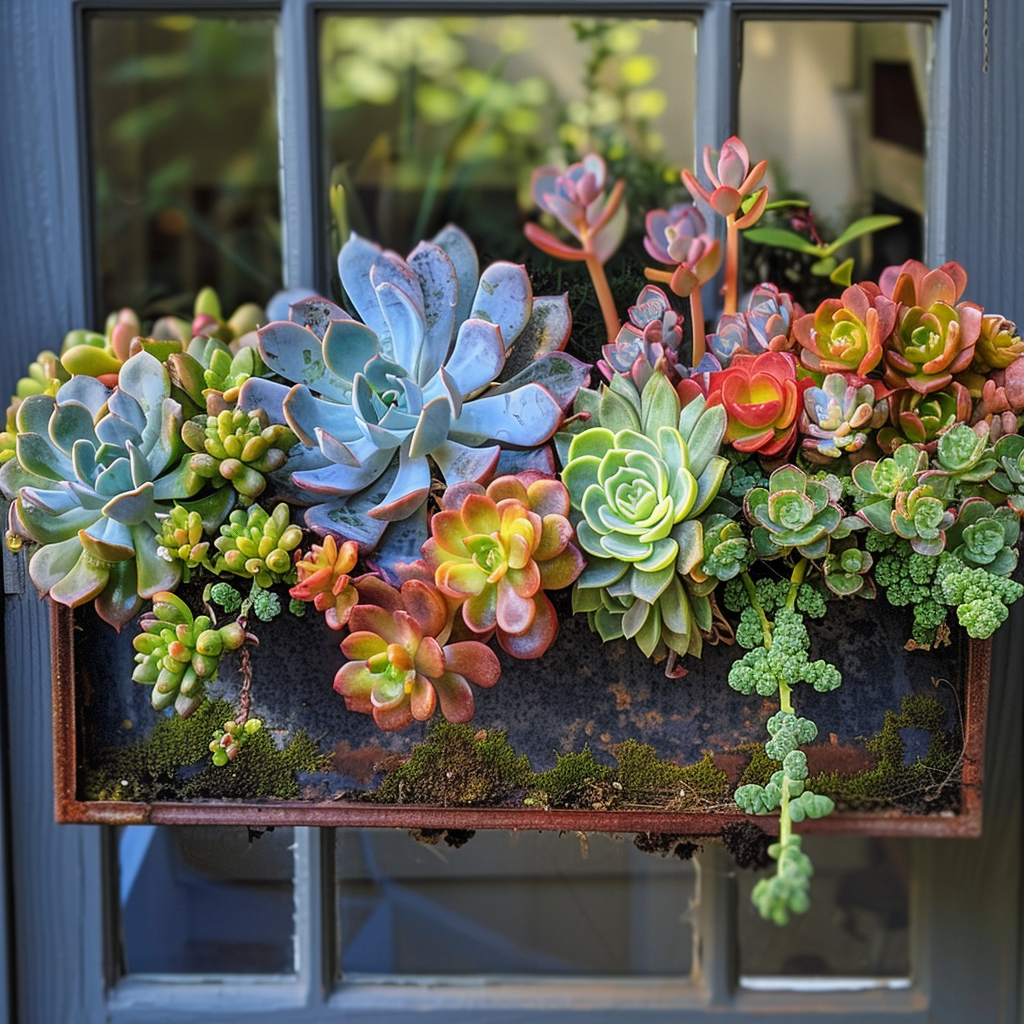
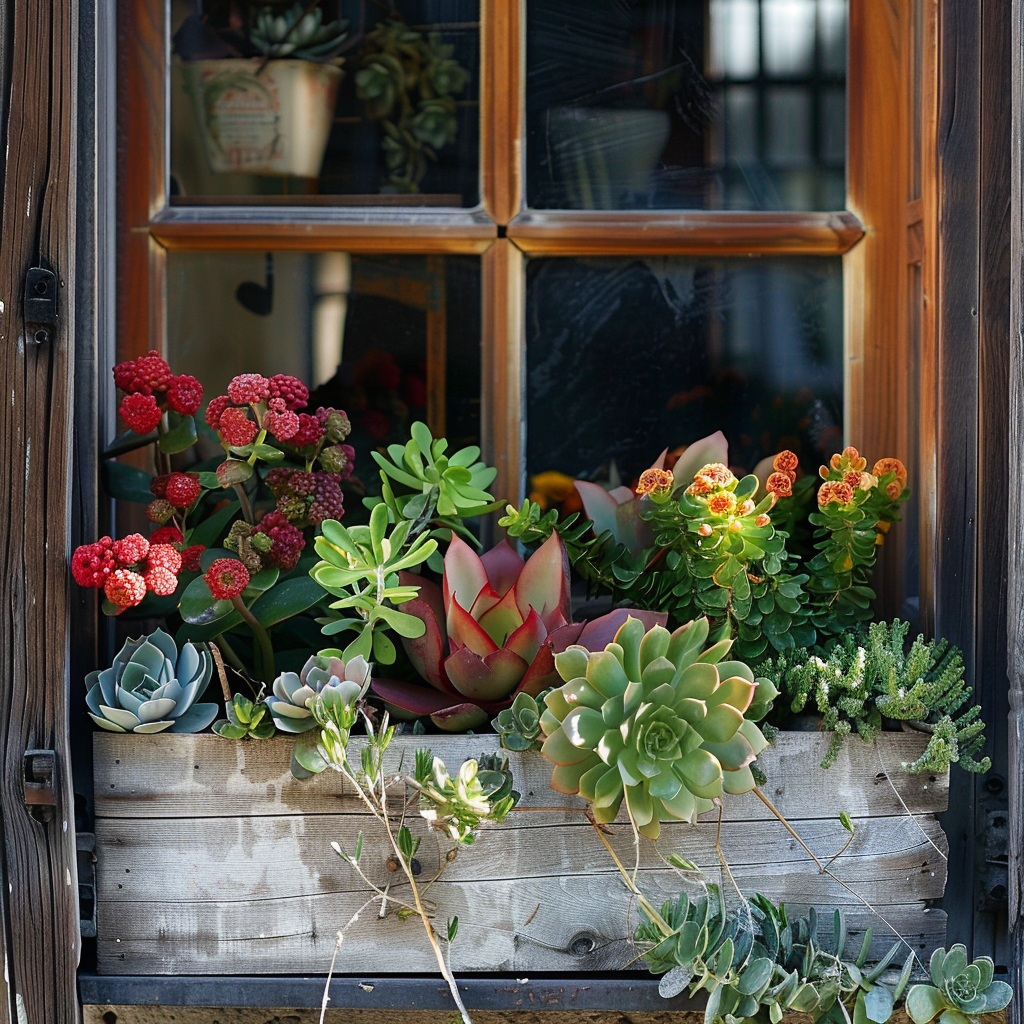
For a low maintenance, drought resistant option, try planting your window boxes with succulents.
Succulents come in a huge range of shapes, sizes, and colors to provide year round interest.
Choose primarily smaller, trailing succulents that will cascade attractively over the edges of your window boxes.
Some top options include:
- Trailing jade or burro’s tail
- Sedums like angelina, dragon’s blood, and string of pearls
- Echeveria and sempervivum for rosettes and texture
- Hens and chicks
- Low-growing agave and aloe
Incorporate a few taller succulents like agave attenuata and columnar cacti for height.
Use 1-2 accent plants with trailing or spreading habits to create a full look.
Well-draining soil and infrequent watering is key to keeping succulents healthy in window boxes.
Window Boxes With Annual Vines
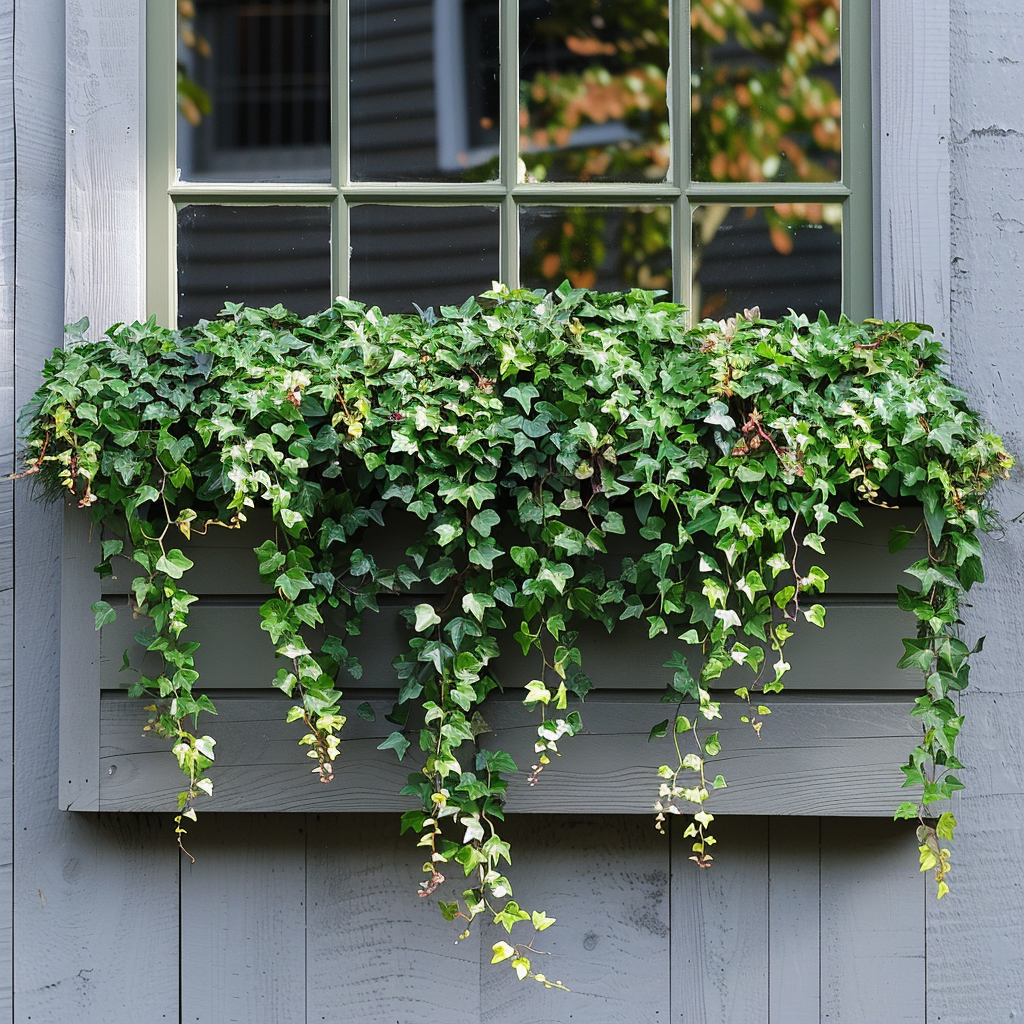
Vining annuals are another excellent choice for window boxes and hanging baskets.
Plant a few vines in the center of your window box, then fill out the surrounding space with lower-growing annuals.
As they grow, the vines will gracefully cascade over the edges of the window box for a soft, romantic look.
Some top annual vine options include:
- Ivy leaf morning glory
- Black-eyed Susan vine
- Potato vine
- Lophospermum (creeping gloxinia)
- Calibrachoa or million bells
- Sweet potato vine
- Thunbergia (black-eyed Susan vine)
Pinch back the vines occasionally to promote branching and fuller growth.
Make sure the window box has good drainage.
Creative Planters as Window Boxes
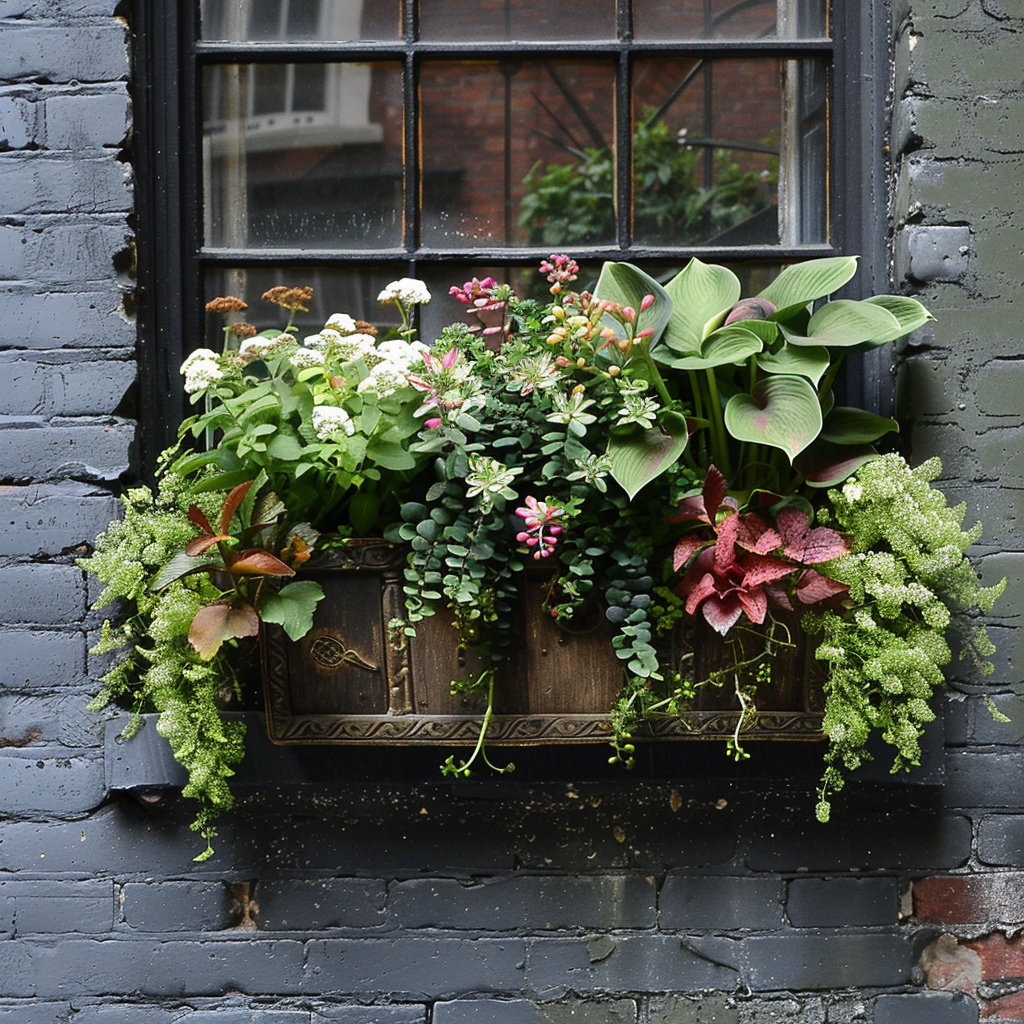
Sometimes you have to get creative when adding window boxes to a non-traditional window size or layout.
Don’t be afraid to use unique containers as makeshift window boxes!
For example, you can mount a vintage crate or toolbox filled with flowers under a horizontal eave or above agarage window.
Macrame hangers make great holders for small planter pots on vertical spaces.
Visit flea markets and garage sales to find castoff tins, buckets, milk cans, and crates to upcycle into chic, non-traditional window boxes.
Drill drainage holes, add some brackets, then fill with lush plants or flowers.
This is a fun way to add personalized whimsy to small or awkward spaces.
Window Boxes With Privacy Screens
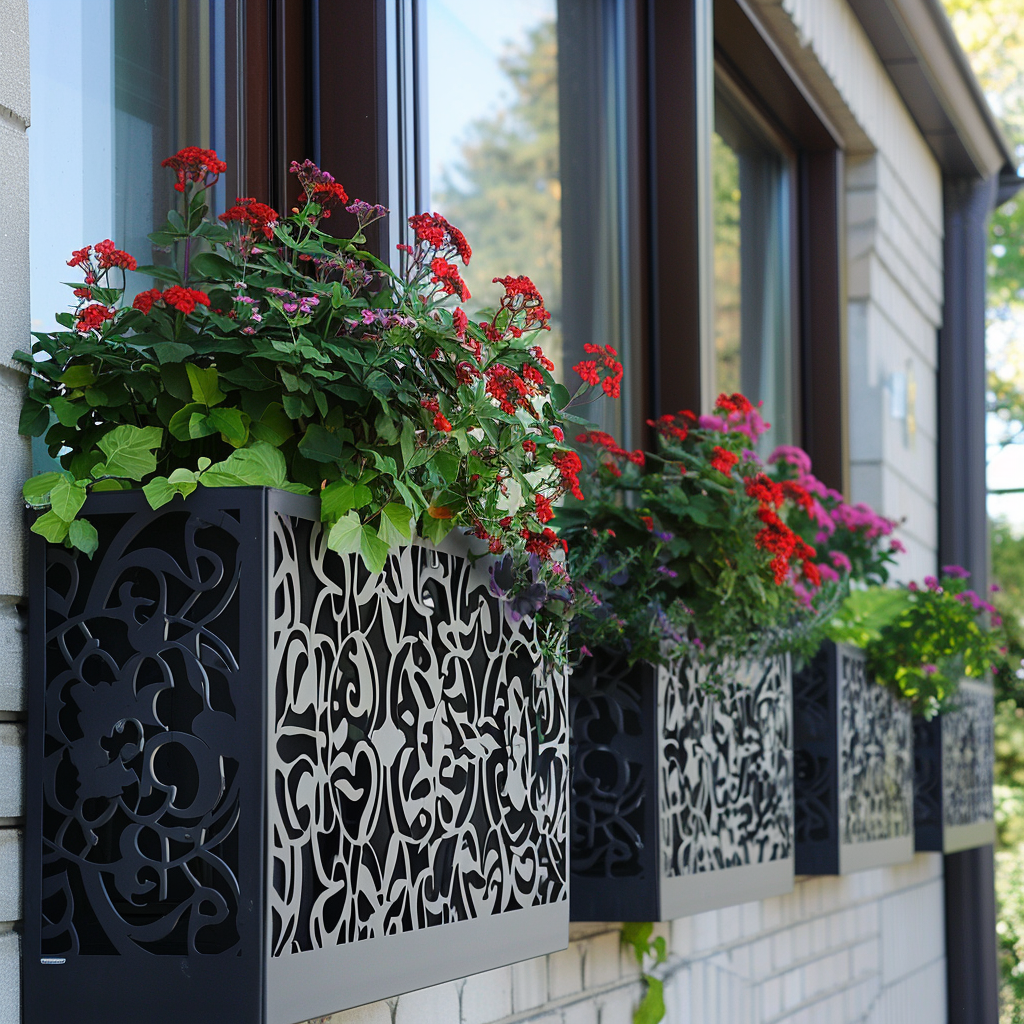
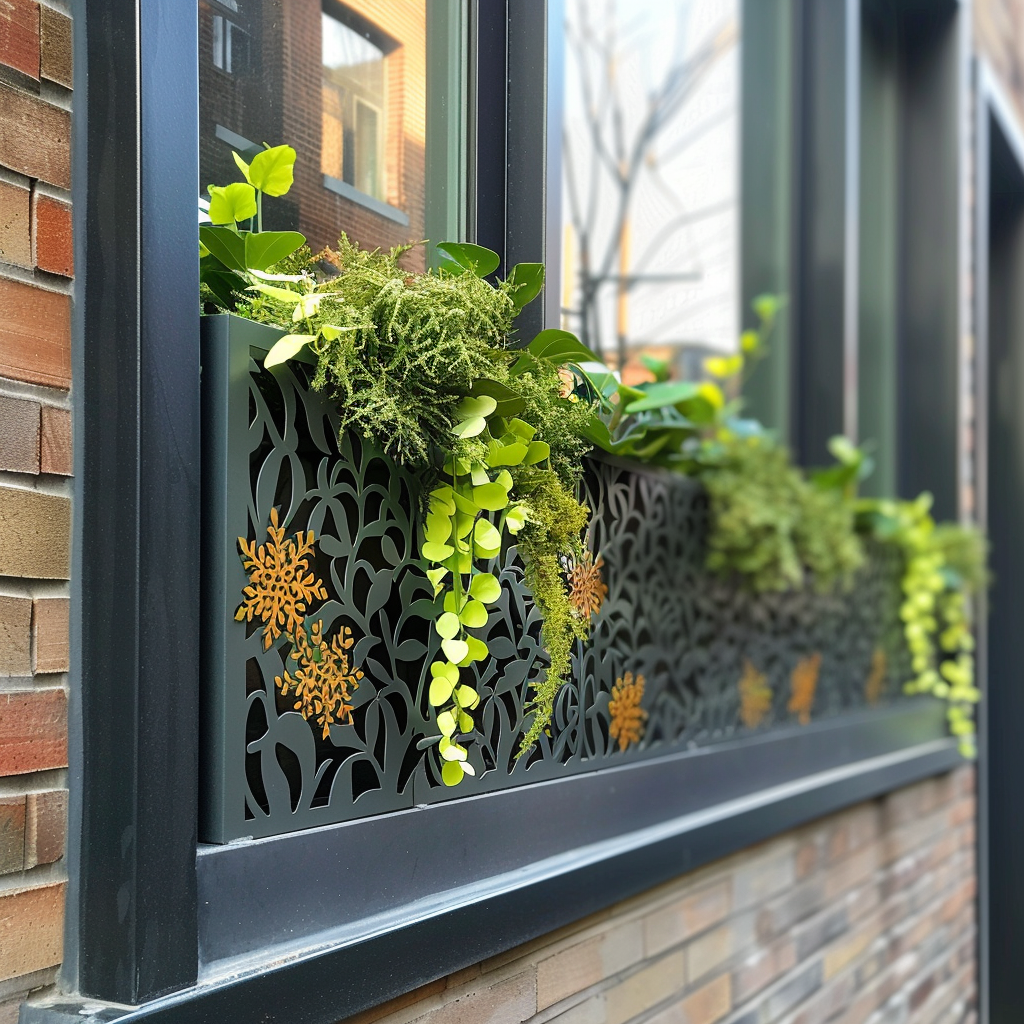
Window boxes can provide privacy as well as curb appeal!
Extend taller window boxes from the bottom of windows up past the windowsill to create an attractive screen.
Plant the lower portion of the window box with shorter plants like impatiens, pansies, or herbs.
Then fill the upper section with taller, bushy plants like grasses, ivy, ferns or spike plants.
For example, extend the window box to about 18 inches high, planting dwarf ivy and impatiens on bottom, and taller Thai dragon tail and holly ferns on top.
The leafy upper plants will form a living screen to filter views in and out of the lower window.
Try this tactic on bathroom, bedroom or dining room windows to block views without fully sacrificing natural light.
✨Click to Get My 101 FREE Designer Room Ideas
Window Boxes With Trellises

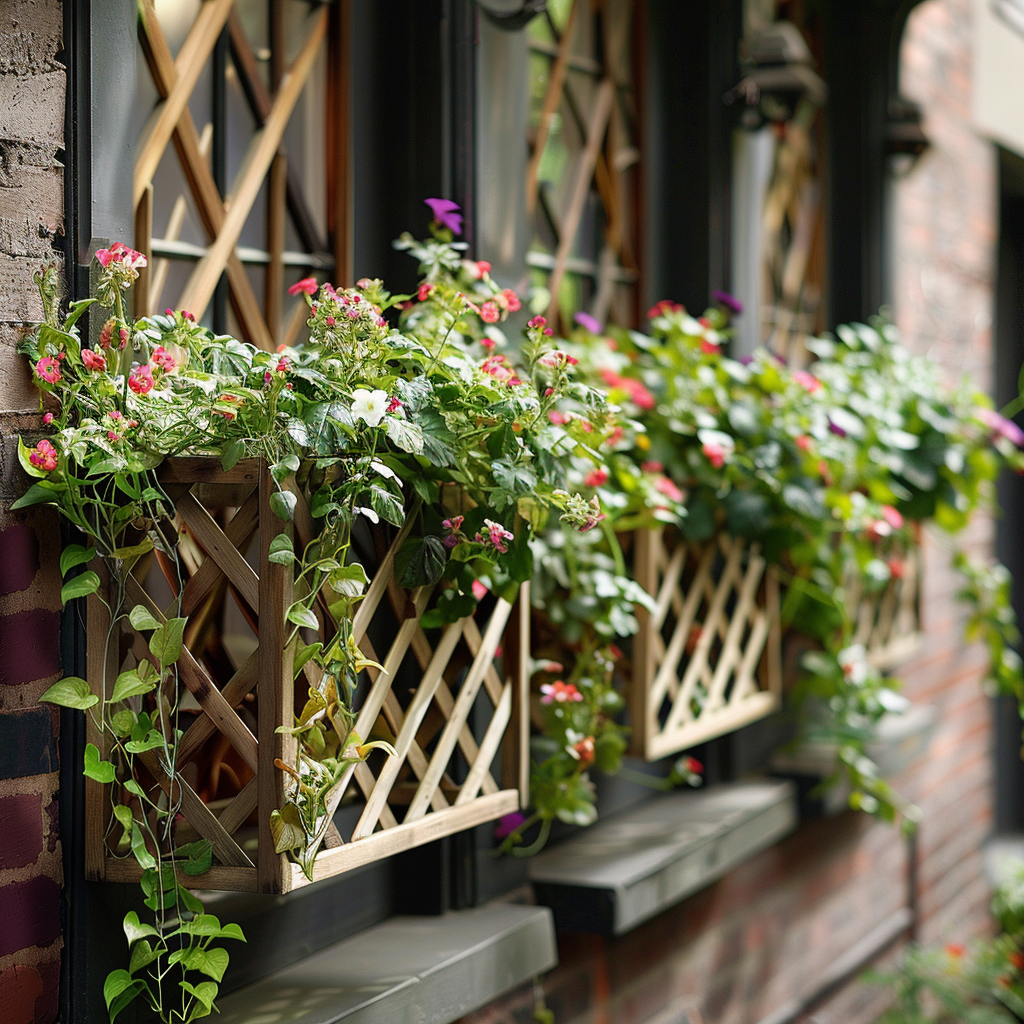
Adding a trellis above a window box instantly boosts vertical growing space.
Use the trellis to support vining plants, creating a beautiful vertical backdrop.
Wooden latticework, wrought iron, or wire mesh make great trellis materials.
Lean the trellis against the house, anchored in the soil of the window box.
Grow vines up both the trellis and outer walls.
Great vining plants for trellised window boxes include:
- Clematis
- Climbing roses
- Trumpet vines
- Passion flowers
- Morning glories
- Sweet peas
- Hyacinth bean vines
Place tall plants like cosmos or foxglove in the window box below the trellis.
The layered plant heights will create a stunning vertical display.
Adding or improving window boxes is one of the simplest DIY upgrades you can make to enhance your home’s curb appeal.
Whether you opt for a traditional or edible window box, creative container, or vertical trellis, flowering window boxes add an instant pop of color and personality.
Match your window box style and color to your home’s architecture, select plants suited to your conditions, and properly water and fertilize.
With the right window box design, you can enjoy gorgeous seasonal blooms and a facelift for your home’s exterior all year long.

